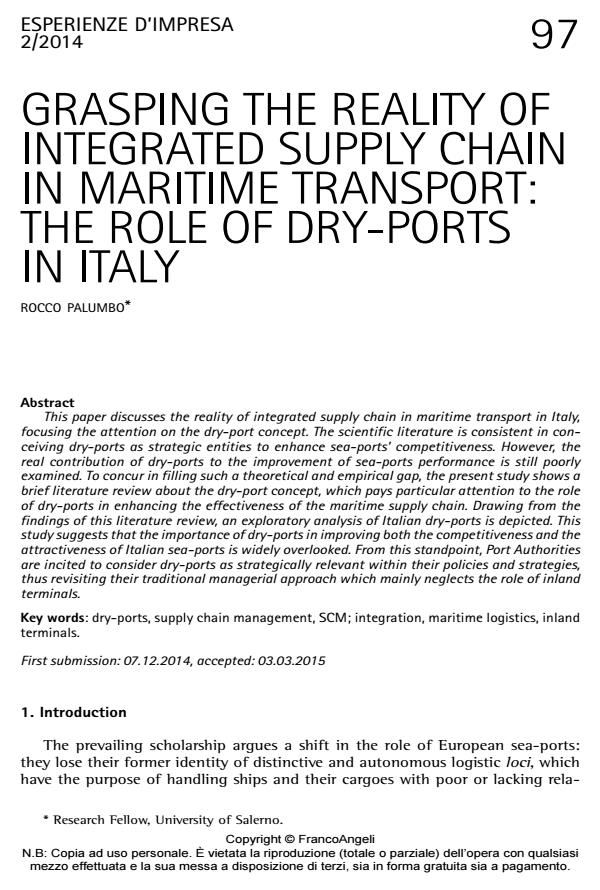Grasping the reality of integrated supply chain in maritime transport: the role of dry-ports in italy
Titolo Rivista ESPERIENZE D'IMPRESA
Autori/Curatori Rocco Palumbo
Anno di pubblicazione 2015 Fascicolo 2014/2
Lingua Italiano Numero pagine 22 P. 97-118 Dimensione file 147 KB
DOI 10.3280/EI2014-002006
Il DOI è il codice a barre della proprietà intellettuale: per saperne di più
clicca qui
Qui sotto puoi vedere in anteprima la prima pagina di questo articolo.
Se questo articolo ti interessa, lo puoi acquistare (e scaricare in formato pdf) seguendo le facili indicazioni per acquistare il download credit. Acquista Download Credits per scaricare questo Articolo in formato PDF

FrancoAngeli è membro della Publishers International Linking Association, Inc (PILA)associazione indipendente e non profit per facilitare (attraverso i servizi tecnologici implementati da CrossRef.org) l’accesso degli studiosi ai contenuti digitali nelle pubblicazioni professionali e scientifiche
This paper discusses the reality of integrated supply chain in maritime transport in Italy, focusing the attention on the dry-port concept. The scientific literature is consistent in conceiving dry-ports as strategic entities to enhance sea-ports’ competitiveness. However, the real contribution of dry-ports to the improvement of sea-ports performance is still poorly examined. To concur in filling such a theoretical and empirical gap, the present study shows a brief literature review about the dry-port concept, which pays particular attention to the role of dry-ports in enhancing the effectiveness of the maritime supply chain. Drawing from the findings of this literature review, an exploratory analysis of Italian dry-ports is depicted. This study suggests that the importance of dry-ports in improving both the competitiveness and the attractiveness of Italian sea-ports is widely overlooked. From this standpoint, Port Authorities are incited to consider dry-ports as strategically relevant within their policies and strategies, thus revisiting their traditional managerial approach which mainly neglects the role of inland terminals.
Parole chiave:Dry-ports, supply chain management, SCM; integration, maritime logistics, inland terminals
Rocco Palumbo, Grasping the reality of integrated supply chain in maritime transport: the role of dry-ports in italy in "ESPERIENZE D'IMPRESA" 2/2014, pp 97-118, DOI: 10.3280/EI2014-002006